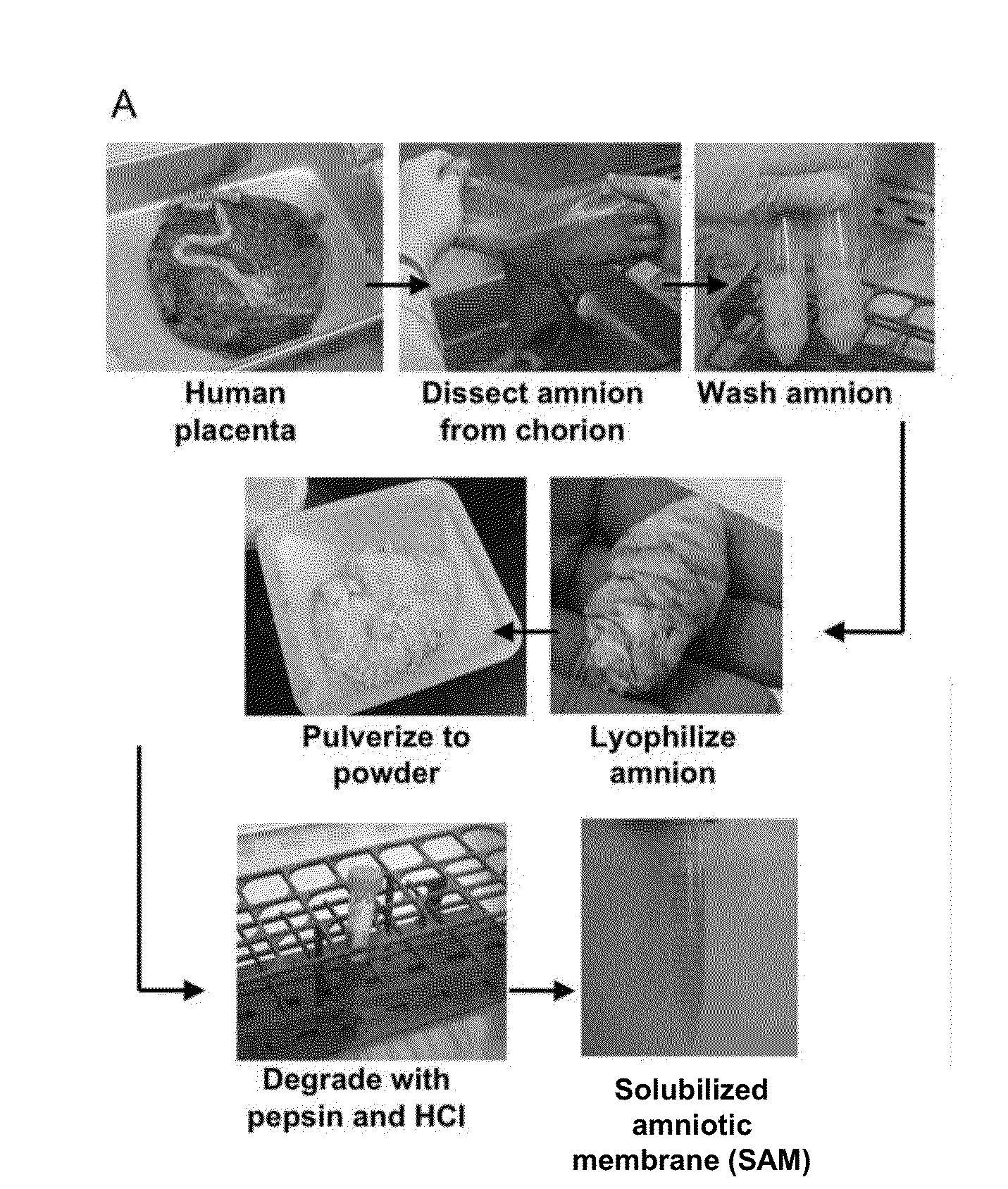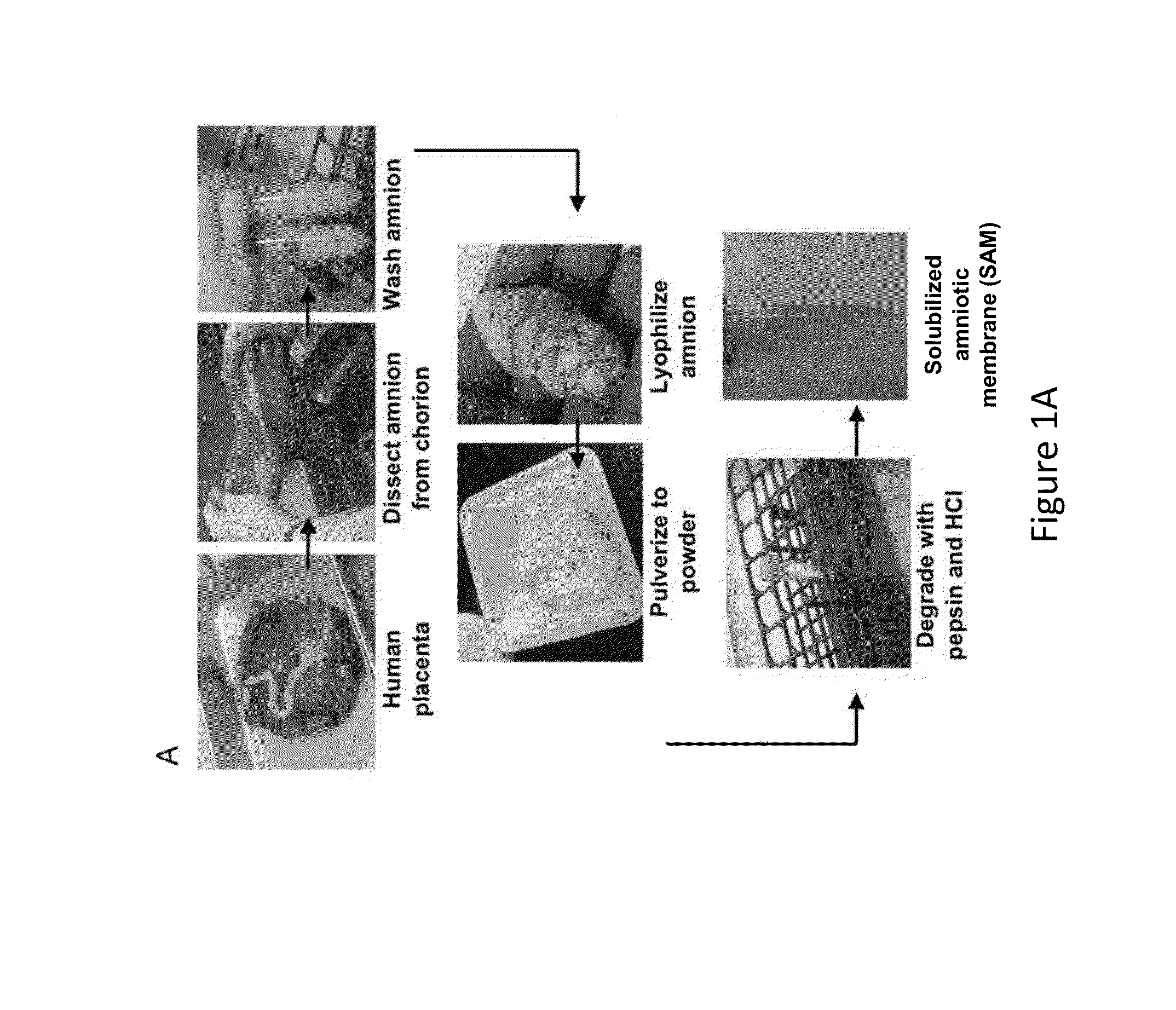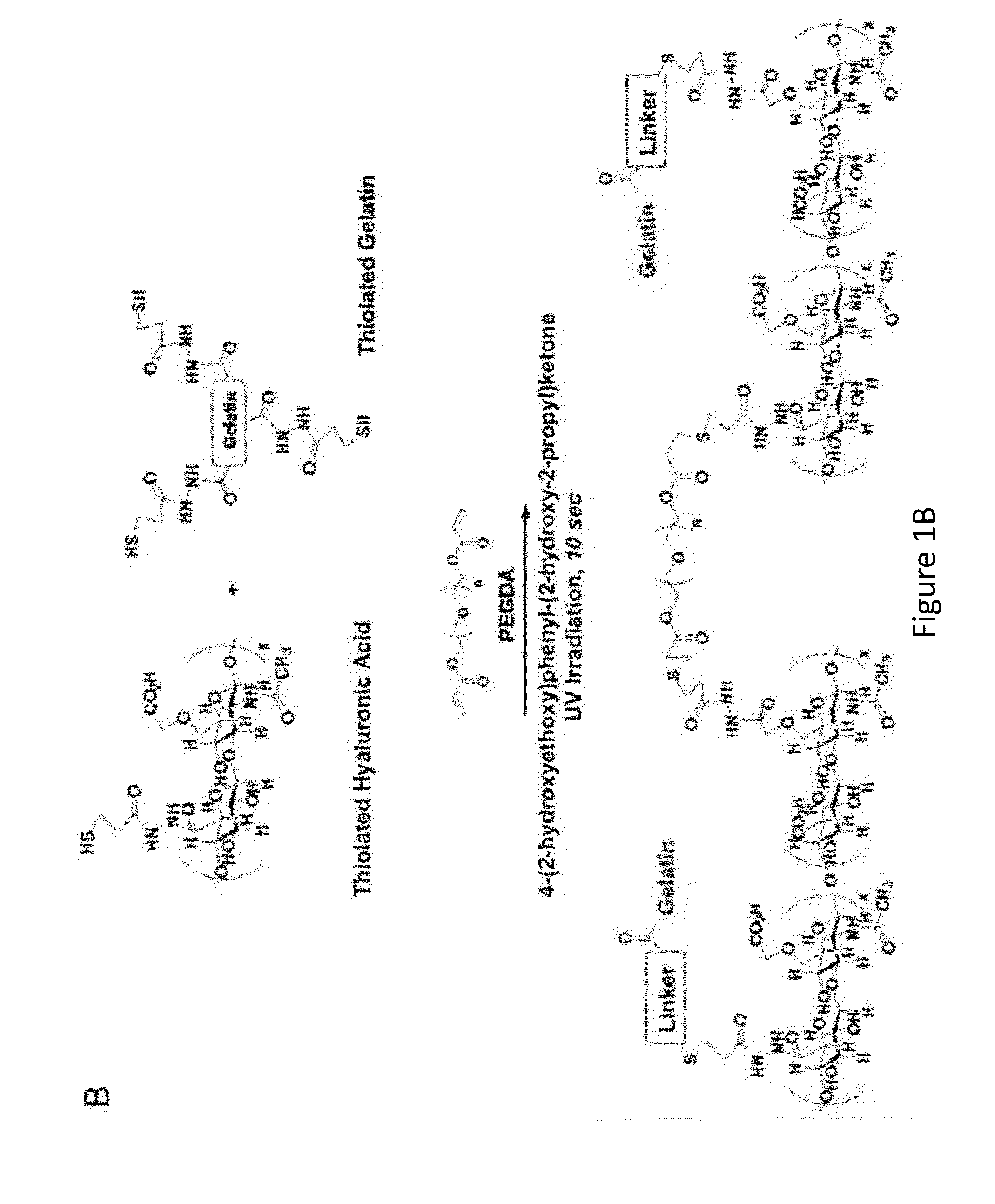Amniotic Membrane Hydrogel and Methods of Making
a technology of amniotic membrane and hydrogel, which is applied in the field of amniotic membrane hydrogel and making methods, can solve the problems of limited number and size of donor sites, negative long-term physiological effects, and devastating burns of extensive length and thickness skin wounds for patients
- Summary
- Abstract
- Description
- Claims
- Application Information
AI Technical Summary
Problems solved by technology
Method used
Image
Examples
experimental examples
[0175]The invention is further described in detail by reference to the following experimental examples. These examples are provided for purposes of illustration only, and are not intended to be limiting unless otherwise specified. Thus, the invention should in no way be construed as being limited to the following examples, but rather, should be construed to encompass any and all variations which become evident as a result of the teaching provided herein.
[0176]Without further description, it is believed that one of ordinary skill in the art may, using the preceding description and the following illustrative examples, make and utilize the compounds of the present invention and practice the claimed methods. The following working examples therefore, specifically point out the preferred embodiments of the present invention, and are not to be construed as limiting in any way the remainder of the disclosure.
example 1
Solubilized Amniotic Membrane (SAM) Containing Hydrogel
[0177]Experiments were designed to create a wound healing product with high clinical efficiency, and preferably one that does not require a cellular component, yet retains the bioactivity of a cellular treatment.
[0178]Amniotic membrane patches have been implemented as dressings for skin wounds for many years. However, application of freeze-dried or cryopreserved patches (amnion-based or artificial grafts as described above) is not optimal for the many wounds that are irregularly-shaped and / or variable depth. To address this problem, a protocol for solubilizing amniotic membrane samples to produce a solubilized amniotic membrane (SAM) solution which can be combined with a number of materials for deposition over wounds was developed. SAM is a cell-free solution, containing cytokines, extracellular matrix (ECM) ECM-associated proteins and other factors that are known to promote wound healing and modulate inflammatory responses. The...
PUM
| Property | Measurement | Unit |
|---|---|---|
| droplet size | aaaaa | aaaaa |
| water content | aaaaa | aaaaa |
| wavelength | aaaaa | aaaaa |
Abstract
Description
Claims
Application Information
 Login to View More
Login to View More - R&D
- Intellectual Property
- Life Sciences
- Materials
- Tech Scout
- Unparalleled Data Quality
- Higher Quality Content
- 60% Fewer Hallucinations
Browse by: Latest US Patents, China's latest patents, Technical Efficacy Thesaurus, Application Domain, Technology Topic, Popular Technical Reports.
© 2025 PatSnap. All rights reserved.Legal|Privacy policy|Modern Slavery Act Transparency Statement|Sitemap|About US| Contact US: help@patsnap.com



